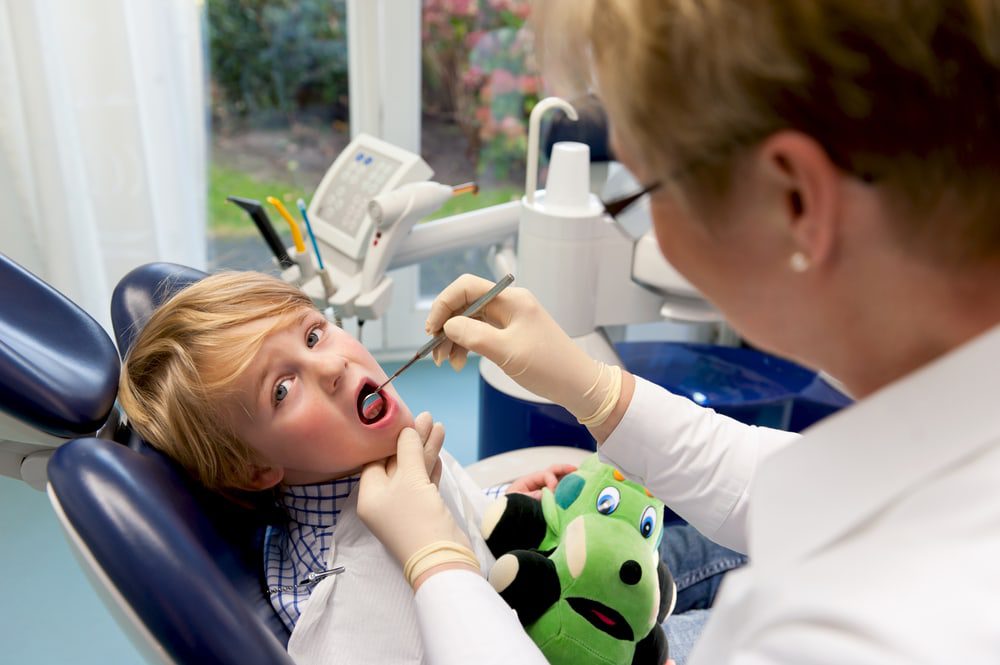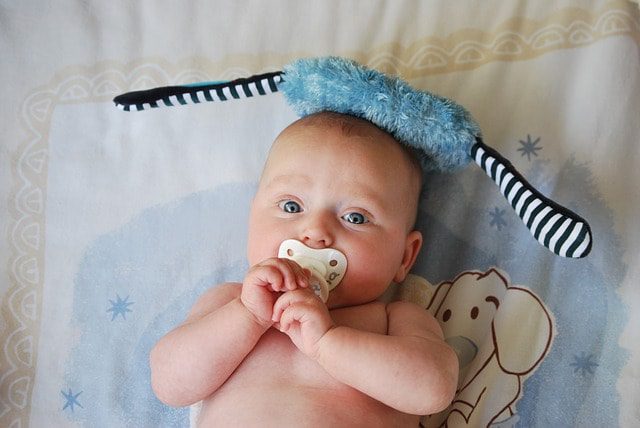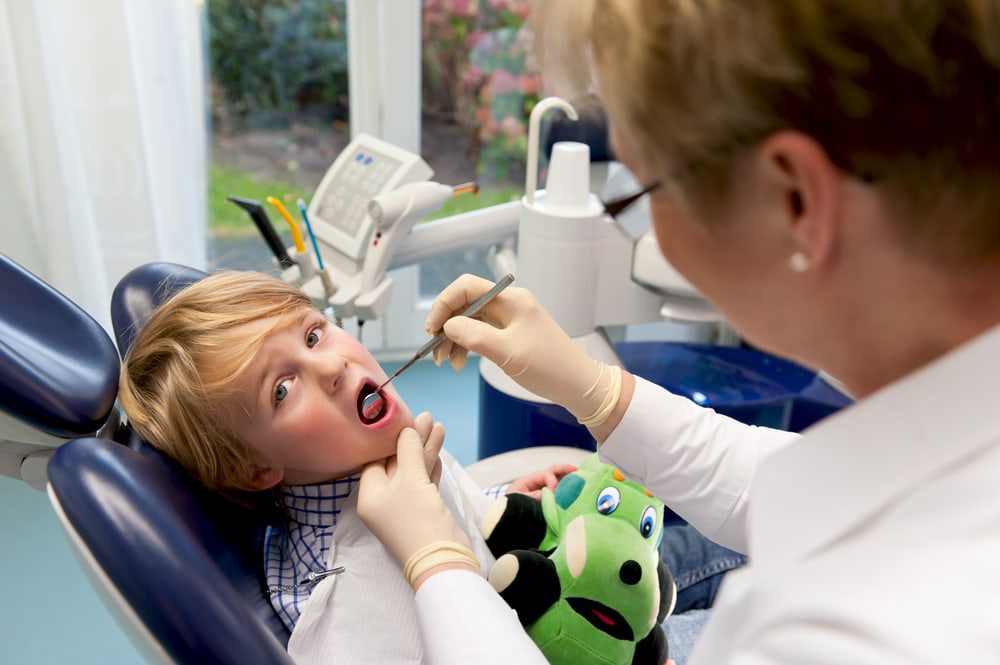Without the years of cavities and tooth decay that adults often have, you might expect toddlers to have more resilient gums that are less prone to bleeding. However, if you notice that your toddler’s gums bleed when brushing, it’s worth your attention.
While the most common causes are harmless when treated, there is always the chance of a more considerable medical concern, so you always want to bring your child to a pediatric dentist for a professional opinion.
Below, we’re covering the most common causes of bleeding gums in toddlers, as well as top tips to prevent and treat bleeding gums in toddlers and the risks of what could happen if you don’t.
Causes of Bleeding Gums in Toddlers
If you’ve noticed bleeding gums from your toddler, the most common cause is a buildup of plaque. Plaque builds up when bacteria in the mouth feed on sugar, which can eventually lead to gingivitis, tooth decay, or gum infections.
Plaque and Gingivitis
Everyone has plaque, but gingivitis can become a toddler gum infection when plaque is not removed and hardens into tartar. The tartar then inflames the gum tissue causing bleeding while brushing. Plaque buildup leading to gingivitis is the top cause of bleeding gums in toddlers, according to the IAPD.
High Sugar Diet
A high-sugar diet includes candy, soda, and cookies, but it also contains fruits, granola bars, juice, and even bread and chips! Anything high-carb will break down into sugars in the mouth, which can lead to plaque.
Dry Mouth and Gums
The mouth should always be somewhat moist to prevent the mouth and gums from drying out. If your toddler has a dry mouth, it could be due to mouth breathing, a short upper lip, an orthodontic issue, or swollen tonsils or adenoids.
Flossing
While flossing regularly is good, over-flossing a child’s mouth can lead to unpleasant bleeding. If it only happened the first few times, there’s no need for concern. If it keeps happening, however, see a dentist.
Brushing Too Hard
Brushing your teeth harder doesn’t necessarily make them cleaner, and your toddler should know that, too. If you’re using an electric toothbrush, consider swapping to a manual brush for a more gentle experience and less bleeding.
Gum Injuries
If you’ve brushed or flossed too hard, you may create a minor injury in otherwise healthy gums. Once the wound heals, the bleeding should stop as well.
Medical Conditions
Sometimes, bleeding toddler gums when brushing is a sign of something more serious. If you suspect something more serious is going on, always consult your pediatric dentist.
Preventing and Treating Bleeding Gums
If your toddlers’ gums bleed while brushing, you can employ a few tips to prevent it from getting worse and treat the damage already done in as little as 7-10 days.
Here’s how to stop bleeding gums or prevent it in the first place:
Brush Twice Daily
While you brush your toddlers’ teeth in the morning and at night, take the time to teach them why cleaning teeth is necessary so that they can handle it on their own one day.
Use just a tiny amount of toothpaste on the brush, and brush the teeth and gums, even if there is some bleeding.
Floss Once a Day
You should be flossing your toddler’s teeth that touch once per day once they reach the age of 2 or 3. If they are older, you may even be able to teach them how to floss on their own.
Adopt a Tooth Friendly Diet
A diet lower in sugar and filled with tooth-friendly items like veggies, low-fat cheese, whole grains, lean proteins, fresh fruit, and tons of water will support healthy teeth and gums.
When you serve a sugary snack or dessert, make sure you are serving it to them after a meal. This way, the additional saliva activated during that time can help to wash the sugars away rather than let them linger on the teeth.
Visit Your Dentist
Starting your kids early on healthy dental habits is one of the best ways to support healthy teeth for all their lives. Taking them to regular dental checkups as their first teeth come in can establish a positive relationship with the pediatric dentist so they can look forward to their appointments.
Plus, time with the dentist can be incredibly valuable to kids. Your dentist can educate them on the importance of regular brushing and may even be able to teach your kids to floss properly so they can carry it on at home.
Managing Gum Pain in Toddlers
As your toddler’s gums recover from the bleeding, you may notice your toddler’s swollen gums, some pain, and lingering bleeding.
While a promise that things will soon get better doesn’t always work with toddlers, you can try taking a more constructive approach by teaching them how to brush their teeth the right way so they can avoid bleeding gums in the future.
Consequences of Not Treating Bleeding Gums
If toddler swollen gums, or those bleeding, are left untreated, a small problem can become a much larger one. A buildup of plaque can quickly turn into gingivitis in toddlers, which can then spread into the teeth and bones of the mouth and head. Bacterial buildup can even lead to something as serious as heart disease.
On the other hand, studies show that poor oral hygiene can also lead to more absences in school and worsening performance in class.
When to Make an Appointment with a Pediatric Dentist
When your normal nighttime routine doesn’t look quite the same, take note of what’s bothering your toddler when brushing their teeth. If your toddler’s gums bleed when brushing, it’s likely a sign of too much plaque or not enough brushing, but there’s always the small chance it’s something more serious.
Conclusion
For healthy gums, start with the treatment tips shared above. However, if your toddler’s gums bleed when brushing, always make an appointment with your pediatric dentist for a professional opinion.
Contact Children’s Dental FunZone for more information or to schedule an appointment for your toddler.




